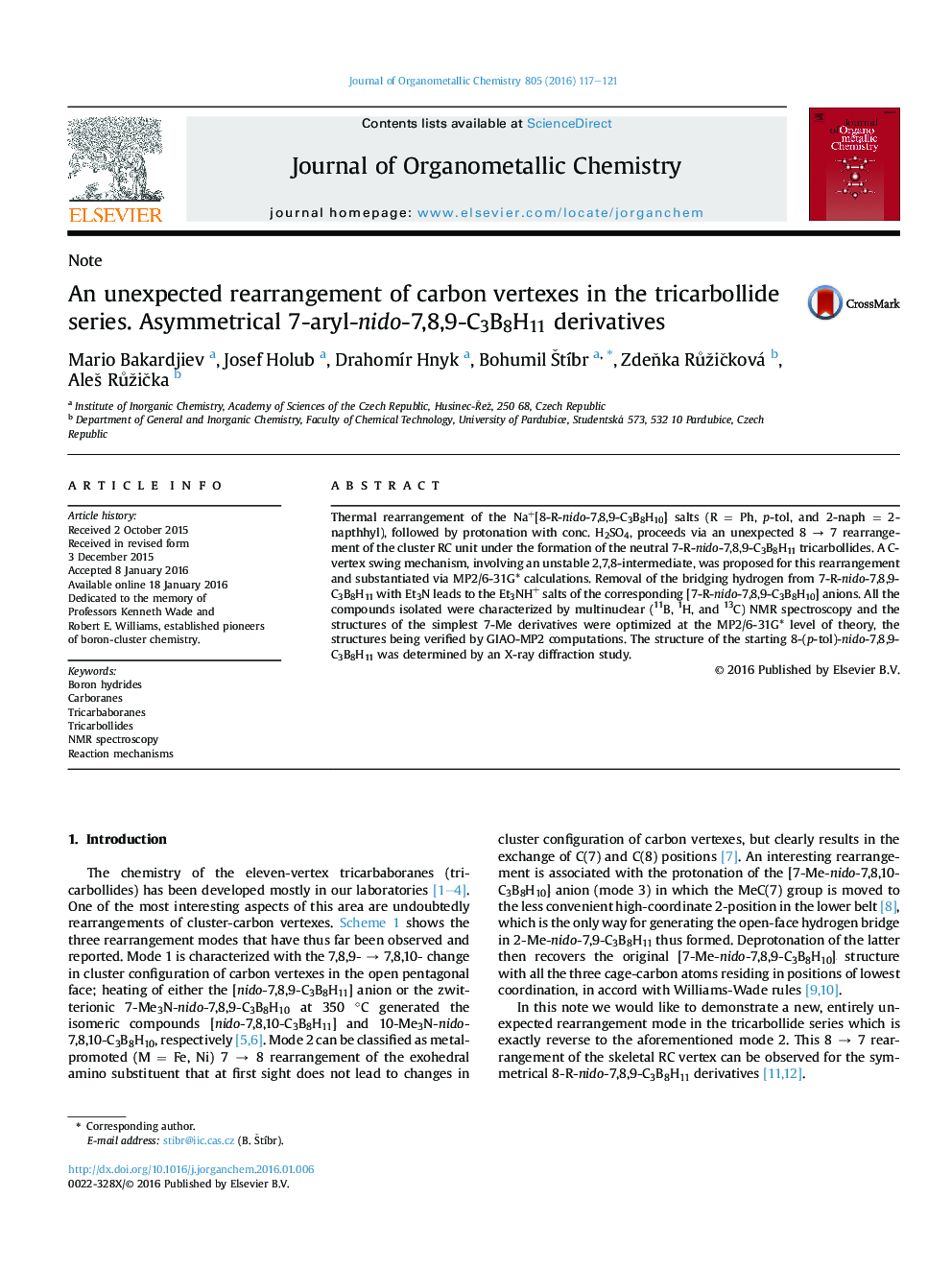| Article ID | Journal | Published Year | Pages | File Type |
|---|---|---|---|---|
| 1324802 | Journal of Organometallic Chemistry | 2016 | 5 Pages |
•A new mode of cage rearrangement in the tricarbollide series.•Reactions leading to carboranes of the asymmetrically substituted 7-R-nido-7,8,9-C3B8H11 series.•Additional mechanistic aspects of rearrangement in the 11-vertex nido tricarbaborane cage.
Thermal rearrangement of the Na+[8-R-nido-7,8,9-C3B8H10]¯ salts (R = Ph, p-tol, and 2-naph = 2-napthhyl), followed by protonation with conc. H2SO4, proceeds via an unexpected 8 → 7 rearrangement of the cluster RC unit under the formation of the neutral 7-R-nido-7,8,9-C3B8H11 tricarbollides. A C-vertex swing mechanism, involving an unstable 2,7,8-intermediate, was proposed for this rearrangement and substantiated via MP2/6-31G* calculations. Removal of the bridging hydrogen from 7-R-nido-7,8,9-C3B8H11 with Et3N leads to the Et3NH+ salts of the corresponding [7-R-nido-7,8,9-C3B8H10]¯ anions. All the compounds isolated were characterized by multinuclear (11B, 1H, and 13C) NMR spectroscopy and the structures of the simplest 7-Me derivatives were optimized at the MP2/6-31G* level of theory, the structures being verified by GIAO-MP2 computations. The structure of the starting 8-(p-tol)-nido-7,8,9-C3B8H11 was determined by an X-ray diffraction study.
Graphical abstractThermal rearrangement of the [8-R-nido-7,8,9-C3B8H10]¯ anions (R = aryls), followed by protonation, proceeds via unusual 8 → 7 rearrangement under the formation of the neutral 7-R-nido-7,8,9-C3B8H11 tricarbollides that deprotonate to yield the corresponding anions [7-R-nido-7,8,9-C3B8H10]−.Figure optionsDownload full-size imageDownload as PowerPoint slide
